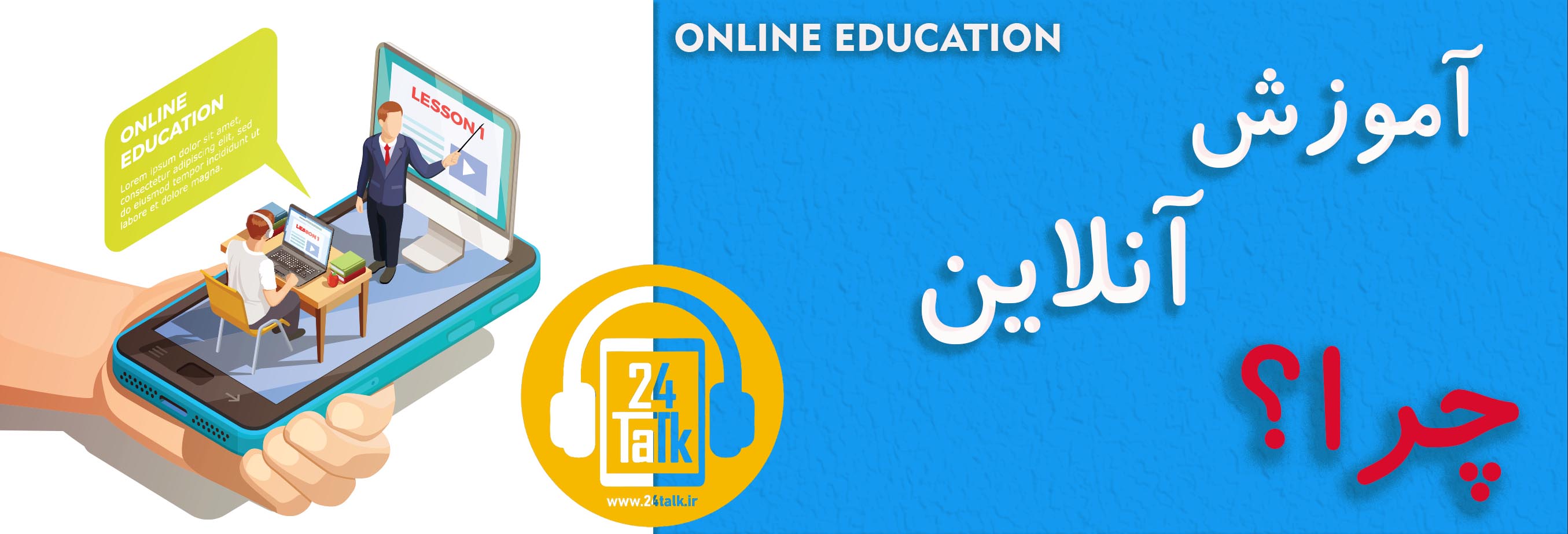IELTS Cue Card شماره 52 :توصیف یک سخنرانی
IELTS Cue Card شماره 52 :
یکی از سوالهایی که ممکنه در بخش اسپیکینگ آیلتس (IELTS Speaking) پرسیده بشه توصیف سخنرانی یک نفره که شما آن را شنیدید. سوالی که از شما پرسیده میشه اینه:
IELTS Cue Card: A speech that somebody delivered and you heard.
برای پاسخ به این سوال باید سه موضوع را در نظر داشته باشید:
| سخنرانی چه کسی بود | who gave the speech |
| موضوع سخنرانی چه بود | what the topic of the speech was |
| تو را تحت تاثیر قرار داد یا نه | whether it impressed you or not |
و توضیح دهید که چرا آن را دوست داشتید/نداشتید.
شما باید یک تا دو دقیقه در مورد این موضوع صحبت کنید. یک دقیقه فرصت دارید تا در مورد آنچه می خواهید بگویید فکر کنید. در صورت تمایل می توانید یادداشت برداری کنید.
در ادامه با انواع سوال هایی که در بخش سوم پرسیده میشود آشنا می شویم و بعد چند نمونه جواب را برای هر بخش و هر سوال بررسی میکنیم و لغات مهم و کاربردی استفاده شده در جواب را با هم مرور می کنیم.
مطالعه ی IELTS Cue Card شماره 52 به شما کمک میکند تا خود را برای بخش اسپیکینگ آیلتس آماده کنید و دایره ی لغات مورد نیاز برای این بخش را افزایش دهید.
سوالات بخش 3
What are the differences between a political speech and a speech given by a non-political person?
چه تفاوتی بین سخنرانی سیاسی و سخنرانی یک شخص غیر سیاسی وجود دارد؟
What are the important aspects of a good speech?
جنبه های مهم یک سخنرانی خوب چیست؟
What makes a person a good speech giver?
چه چیزی باعث می شود فرد سخنران خوبی باشد؟
پاسخ نمونه بخش 2
Speeches are funny things! Some people are really good at public speaking, and others just aren’t. I think it is very difficult to talk in front of other people in an engaging way but when people do this really well, then you remember the occasion and how you felt at the time too. Obviously, really bad speeches can be memorable too, but I’m not going to talk about any of those today.
I want to tell you about a short speech I heard in a work context, I’ll tell you who gave the speech, what it was about and why I think it was so good.
The speech was given by a manager in a place I was working. He was giving a speech to say goodbye to one of our colleagues who was leaving to set up as an independent consultant, but who had worked at the organisation a very long time, perhaps forty years. Everyone was sad to see this person go, as they were very popular, but we all wished them well and understood why they felt they needed to move on. It was a reasonably big workforce, so about sixty of us had gathered in the open-plan office to say goodbye and present a gift to our departing friend and co-worker.
I think sometimes ‘leaving do’s’ can be really awkward and embarrassing Everyone stands around self-consciously and there is an excruciating and brief ‘goodbye and thank you’ from the boss, and then everyone stares at the poor person who is leaving whilst they rip open and read a rapidly bought card and mumble their thanks for a rather anonymous gift. This, however, was different. Our manager had made a real effort to prepare a good speech that was funny, well-researched, engaging and genuinely affectionate. For example, one of the things he did, was going back to our colleague’s original application form and he put together a quiz for all of us to do, in which we had to guess what hobbies and qualifications they had declared all that time ago. It was a great way to ‘break the ice’ and involve everyone, and the results were hilarious. Even the colleague who was leaving was amazed at the contents of his original form. He also thanked the colleague for some very specific work that he had done and read out comments from others that he had been collecting over the last couple of weeks which were mini testimonials and statements of appreciation from other colleagues.
I think the speech was good because it involved everyone, shared funny (but not too private) stories that were relevant to the leaver and the effort our boss had put into preparing it showed his respect and admiration for the colleague who was departing. The quiz also gave everyone something to talk about, so people could chat and mingle a bit after the presentation. It was also not too long! It held interest and was appropriate for the context.
For me, the speech was a really good example of how to communicate effectively on such an occasion. It was perfectly judged and helped bring the team together even though someone was leaving, and made me – and others too – feel happy and lucky that we worked in such a caring team.
حالا نوبت شماست که دست به کار شوید و برای سوال های این کیوکارد جواب بنویسید. در قسمت نظرات این مطلب، جواب خود را با ما به اشتراک بگذارید تا در کوتاه ترین زمان، اساتید مجرب آیلتس آکادمی مجازی آموزش زبان انگلیسی ۲۴talk جواب شما را بررسی کنند. برای پاسخ به سوالات این کیوکارد می توانید از نکاتی که در ادامه این مطلب آمده کمک بگیرید.
نکات مهم برای جواب دادن به IELTS Cue Card شماره 52
به سخنرانی ای فکر کنید که شنیدید و دوستش داشتید یا دوست نداشتید. معمولا مردم سخنرانی های جالبی را به یاد می آورند که با شیوایی بسیار خوبی ارائه شده و برداشت های ماندگاری دارند. این سخنرانی می تواند چیزی باشد که شخصا شنیده اید یا از تلویزیون تماشا کرده اید یا از رادیو شنیده اید. بعضی اوقات سخنرانی های یک فرد مشهور در طول سال ها زنده می ماند و توانسته کل یک ملت را تحت تاثیر قرار بدهد. می توانید سخنرانی یک رهبر سیاسی که از تلویزیون شنیدید را ذکر کنید یا حتی سخنرانی های انگیزشی مانند TedTalk که در اینترنت دیده اید. این گزینه ها هم می تواند انتخاب مناسبی باشد:
A speech that was given by your school teacher.
سخنرانی معلم مدرسه
A speech that was given by your debate team leader/ class captain/ sports team leader/ football, cricket, rugby coach etc.
سخنرانی رهبر تیم مناظره / مبصر کلاس / مربی تیم ورزشی / مربی فوتبال ، کریکت ، راگبی و غیره
A speech delivered by a local politician that addresses a public issue.
سخنرانی یک سیاستمدار محلی که به یک موضوع عمومی می پردازد.
A speech that was given by a social worker that touched you.
سخنرانی ای یک مددکار اجتماعی که شما را تحت تاثیر قرار داد.
A speech delivered by the presenter of a social program.
سخنرانی مجری یک برنامه اجتماعی.
حواستان باشد که از صحبت درمورد سخنرانی های شخصی مانند پند و نصیحت هایی که والدین ، پدربزرگ و مادربزرگ یا معلمین شما به شما دادند پرهیز کنید. اینها معمولا توصیه شخصی محسوب می شوند ، نه سخنرانی در معنای کلی تر آن.
برای پاسخگویی هرچه موثرتر به این سوال ساختار زیر را به ترتیب برای موضوع صحبت تان به کار برید:
1. Name of the person who gave the speech and his/her identity.
2. The occasion and reason the person gave the speech and how old you were then.
3. What was the topic of the speech and who were the audiences of the speech?
4. how the speech was accepted and praised by the audience.
5. How people commented on the speech and how they reacted after they heard the speech.
6. How you accepted the speech and what is your personal opinion on the issues addressed by the speech giver.
7. How you felt and what was your reaction.
8. How the speech touched you and what valuable things you learned from that.
9.How the speech affected you in your later course of action in life.
- نام شخصی که سخنرانی کرده و هویت او.
- مناسبت و دلیلی که شخص آن سخنرانی را ایراد کرده و سن شما در آن زمان که سخنرانی را شنیدید.
- موضوع سخنرانی چه بود و مخاطبان سخنرانی چه کسانی بودند؟
- نحوه پذیرش و تمجید حضار از سخنرانی
- اظهارنظر افراد درباره سخنرانی و واکنش آنها پس از شنیدن سخنرانی.
- میزان پذیرش سخنرانی توسط شما و نظر شخصی شما در مورد موضوعاتی که سخنران درمورد آنها صحبت کرد.
- احساس شما چه بود و چه واکنشی نشان دادید.
- سخنرانی چه ناثیری بر شما داشت و چه چیزهای ارزشمندی از آن آموختید.
- سخنرانی در تصمیم گیری های آینده شما چه تاثیری گذاشت.
اگر اشاره کردید که سخنرانی را دوست ندارید می توانید نکات زیر را ذکر کنید:
1. The speech giver took a long time and repeated the same topics over and over again.
2. The topic was not interesting at all and you did not believe everything he/ she said.
3. That was a politically biased speech that concealed some truth.
4. The speech was manipulated to give misleading information to the audiences.
5. People were astonished with the lies delivered in the speech.
6. The person who gave the speech was not an exemplary and honest person.
- سخنرانی مدت زمان زیادی طول کشید و سخنران همان موضوعات را بارها و بارها تکرار کرد.
- موضوع اصلا جالب نبود و شما هرچه او گفت باور نکردید.
- این سخنرانی سیاسی و مغرضانه بود و برخی از حقایق را پنهان می کرد.
- سخنرانی برای دادن اطلاعات گمراه کننده به مخاطبان دستکاری شده بود.
- مردم از دروغ های سخنرانی متحیر شده بودند.
- سخنران فردی نمونه و صادق نبود.
اگر برای IELTS Cue Card شماره 52 خود را آماده کردید، می توانید با تغییرات جزیی به موضوعات کیو کارت های زیر هم به همین صورت جواب دهید:
1. Talk about a speech delivered by a famous person.
2. Describe an event when you were greatly touched.
3. Describe a speech that has a great influence on your life.
4. Talk about a speech you watched on TV or heard on the radio.
5. A famous speech you heard and still remember.
- در مورد سخنرانی یک شخص مشهور صحبت کنید.
- رویدادی را توصیف کنید که بسیار تحت تاثیر آن قرار گرفتید.
- سخنرانی را توصیف کنید که تاثیر زیادی در زندگی شما دارد.
- درباره سخنرانی که از تلویزیون تماشا کرده اید یا از رادیو شنیده اید صحبت کنید.
- سخنرانی معروفی که شنیده اید و هنوز هم بخاطر دارید.
اگر مطالب IELTS Cue Card شماره 52 برایتان مفید بود و هنوز درمورد بخش اسپیکینگ آیلتس یا سایر بخش های این آزمون سوال یا نیاز به تمرین بیشتر داشتید، پیشنهاد میکنم در دورهی غیر حضوری ایلتس شرکت کنید تا با بهره مندی از کمک های اساتید باتجربه ی آیلتس، نمره ی ایده آل خود را از این آزمون سرنوشت ساز بدست آورید.
اگر هم قصدتان توانایی مکالمه به زبان انگلیسی است به شما شرکت در دورهی مکالمه زبان انگلیسی آکادمی آنلاین 24talk را پیشنهاد میکنیم که با تمرکز بر روی تقویت مهارت مکالمه، دورههای خصوصی و نیمه خصوصی در سطوح مختلف برای شما زبان آموزان عزیز ارائه می کند.
جواب نمونه و نکات برگرفته از سایت: ielts-mentor










